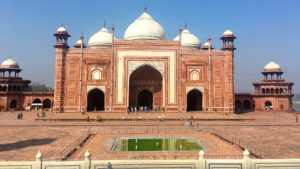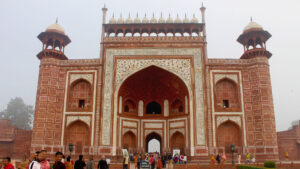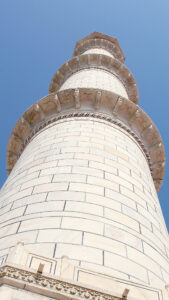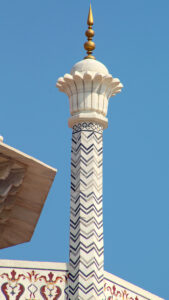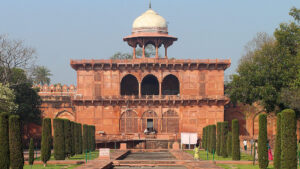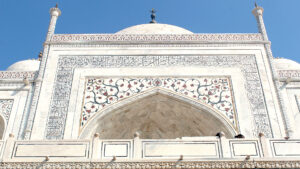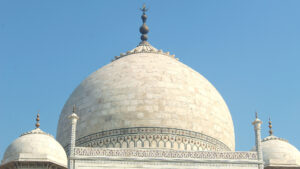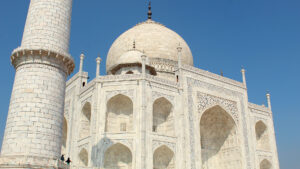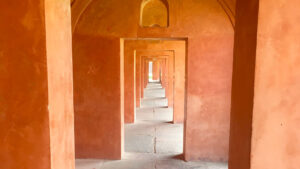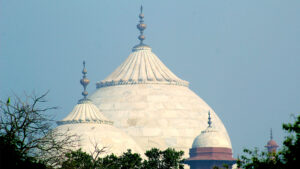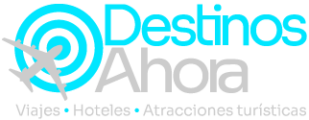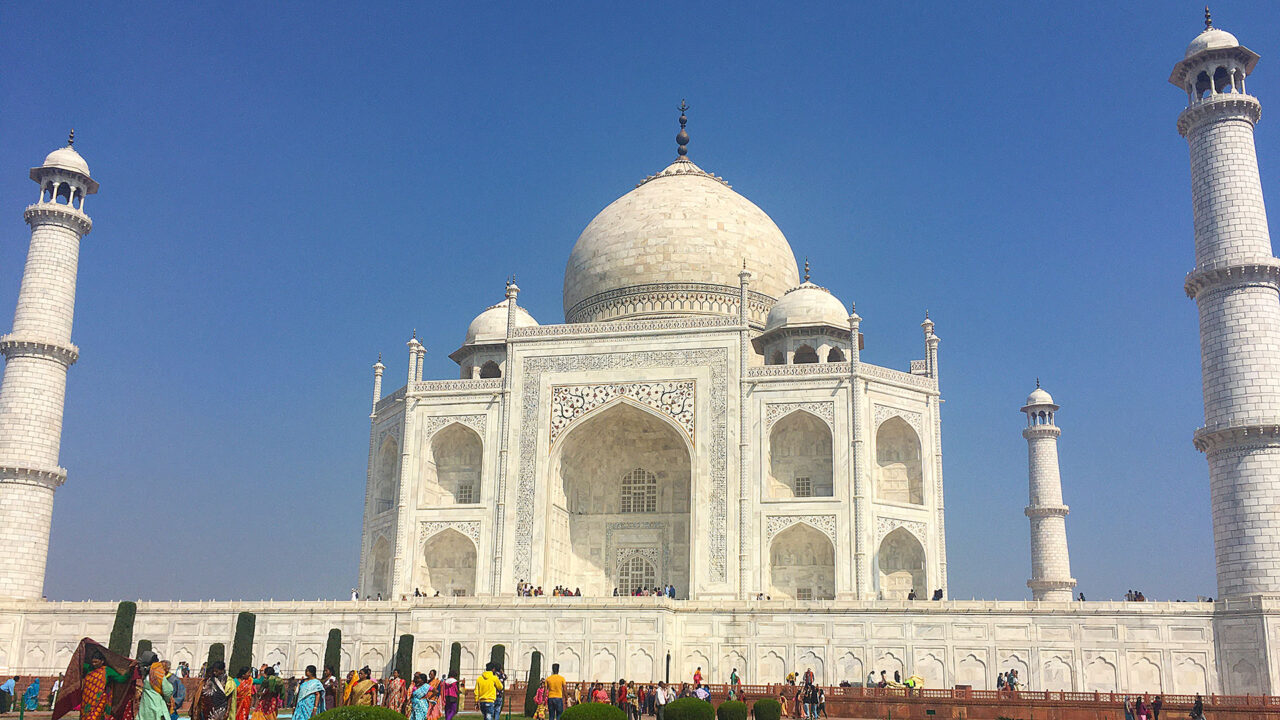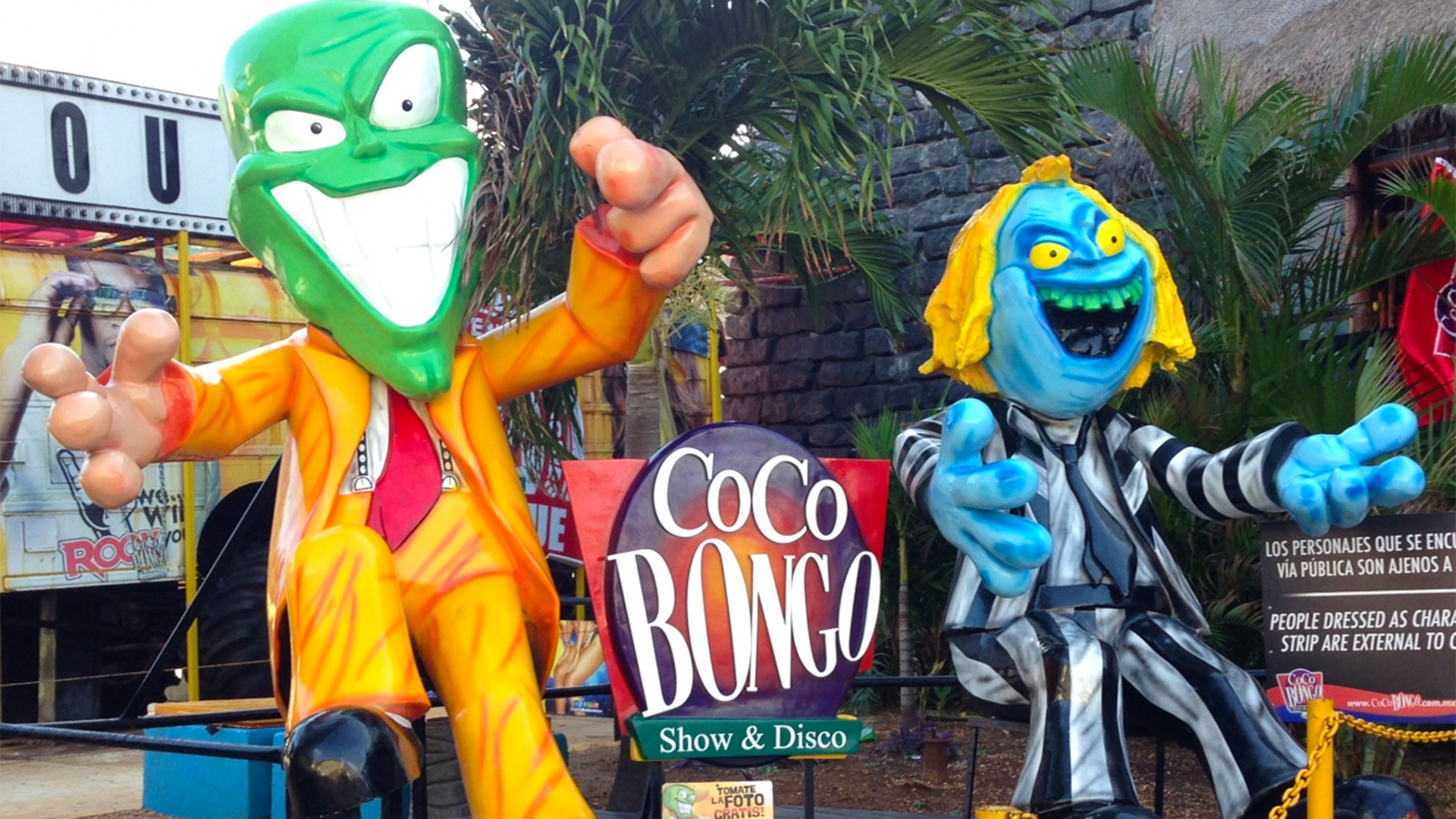There are monuments that symbolize their country, such as the Eiffel Tower in France, the Roman Colosseum in Italy, and the Taj Mahal which represents India. What makes this palace special compared to other world monuments?
We traveled there to find out, but the weather and an impending pandemic threatened to ruin our only opportunity. In the process we unravel a tale of love, precious stones, and a family of artisans left crippled by their dedication to their centuries-old craft.
Video (TL;DR)
Our Journey to the Taj Mahal
On our first trip to India, we opted to travel as part of a tour group since we didn’t speak the language. The tour took us around the northern state of Uttar Pradesh.
The scheduled day for the Taj Mahal was forecast to be sunny, but recent drizzle and low temperatures created a fog that threatened to ruin our morning visit.
We traveled by bus to the city of Agra, where we switched to an electric tram as we approached the complex, one of several initiatives to protect it from pollution. Upon arrival we had our first big takeaway.
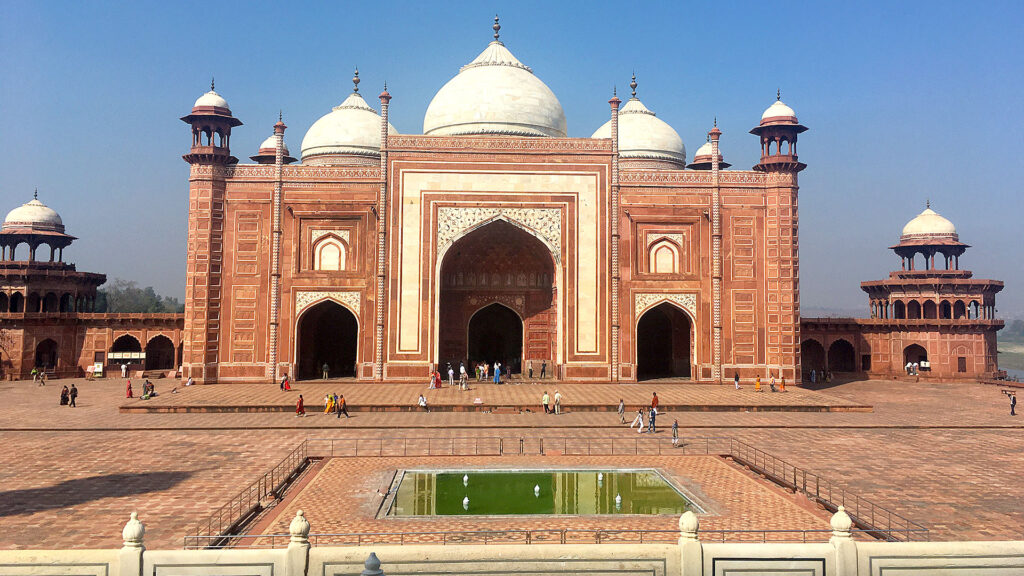
3 The Taj Mahal Comprises More than One Building

What the world knows as the Taj Mahal represents the main section of a large 17-hectare complex on the banks of the Yamunā River. This terrain houses a darwaza or main entrance, a mosque, a side building, a central garden crossed by a canal, several tombs, and the renowned white mausoleum.
The imposing architecture of the entire complex mixes Persian, Islamic, Hindu and Turkish styles. Most of the structures within the Taj Mahal palace are made of red sandstone.
However, the main mausoleum stands out for its white marble transported from Makrana, a city in the state of Rajasthan more than 515 kilometers or 320 miles away. This marble is famous for its purity and hardness, an fact that will become relevant later.
All of this made the Taj Mahal a tomb fit for an emperor, but it actually leads us to our second takeaway.

2 The Taj Mahal Was a Love Gesture
It turns out that Shah Jahan, Muslim emperor of the Mughal dynasty, ordered the construction of the Taj Mahal in the 17th century as the mausoleum of Arjumand Banu Begum, his fourth wife and mother of 14 of his children.

Our guide informed us that Jahan, then a 14-year-old prince, was walking through a bazaar in modest clothing when he instantly fell in love with Begum, who was selling silk and crystal garments. The prince bought all of her merchandise that day, then asked to marry her, although the ceremony took place years later.
Jahan loved Begum so much more than his other wives that he declared her Mumtaz Mahal, a title interpreted as “the jewel of the palace.” Unfortunately, Mumtaz passed away during her last childbirth. Jahan christened the palace after his late love and was buried there alongside the object of his devotion.
We pondered this story as we crossed the darwaza towards the Taj Mahal garden, but the doubt persisted. Would we be able to see the legendary marble mausoleum behind so much mist?
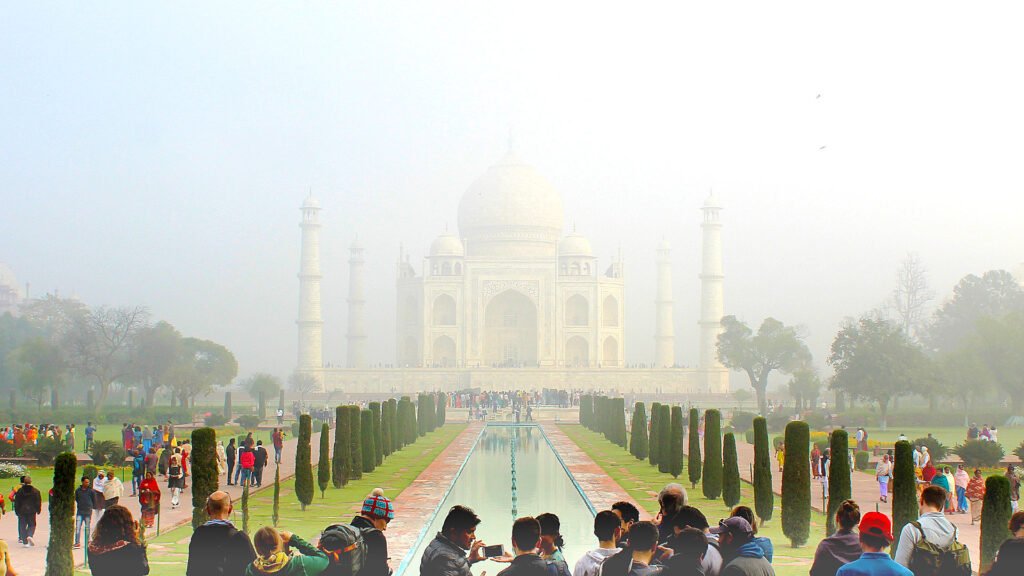
Imminent Threat
We didn’t know at the time that Indian authorities were about to shut down all tourist attractions due to the initial threat of COVID-19. Unaware, we crossed the threshold together. It would be our only chance.
Fortunately, the glorious mausoleum stood out from all the haze. Soon after, the sun shone through and lit up the Taj Mahal as we crossed the garden. We were able to appreciate every detail such as its bulbous dome, its corner minarets (similar to the Qutub Minar), and its sculpted reliefs. Above all else, its colorful floral designs and symbolic storytelling calligraphy.
Which brings us to our most shocking takeaway.
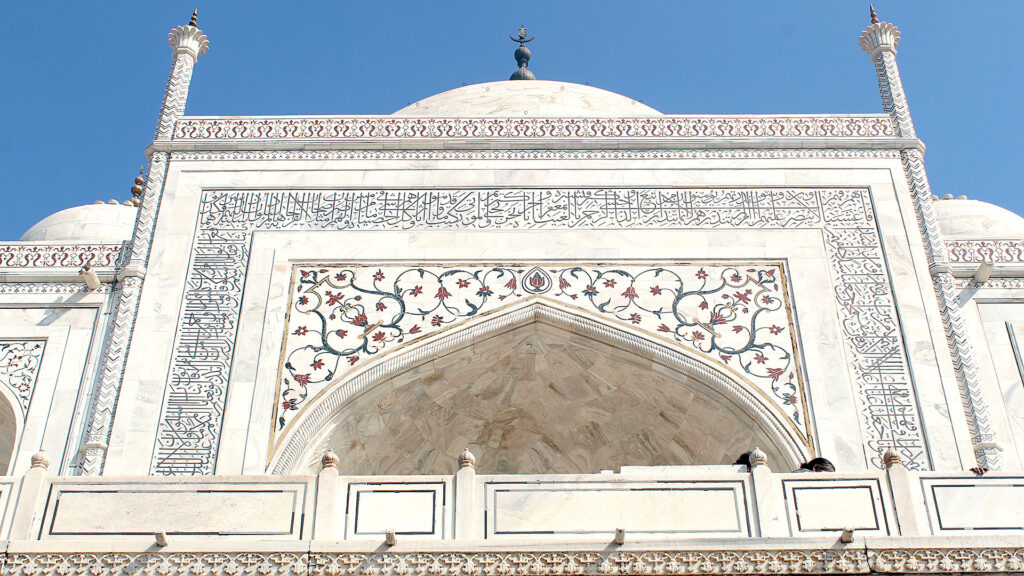
1 Taj Mahal Decorations Aren’t Painted, but Made of Embedded Stones
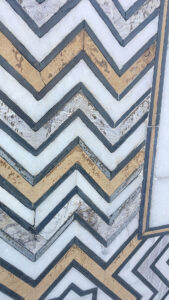
Inlaid decor set the Taj Mahal apart. Expert craftsmen were hired during its construction to sculpt their designs directly on the white marble, which we remind you was specifically chosen for its hardness. Afterwards, the artisans carved various multicolored semi-precious stones to fit perfectly within the shapes carved in the marble.
This inlaying practice, called parchin kari, derives from the Italian pietra dura. Descendants of the original Taj Mahal craftsmen still make marble decor using this process. They’ve all inherited their technique from their predecessors, since no existing art school teaches it. The rigorous effort with which they carve marble by hand day after day leaves indentations and deformities in their hands.
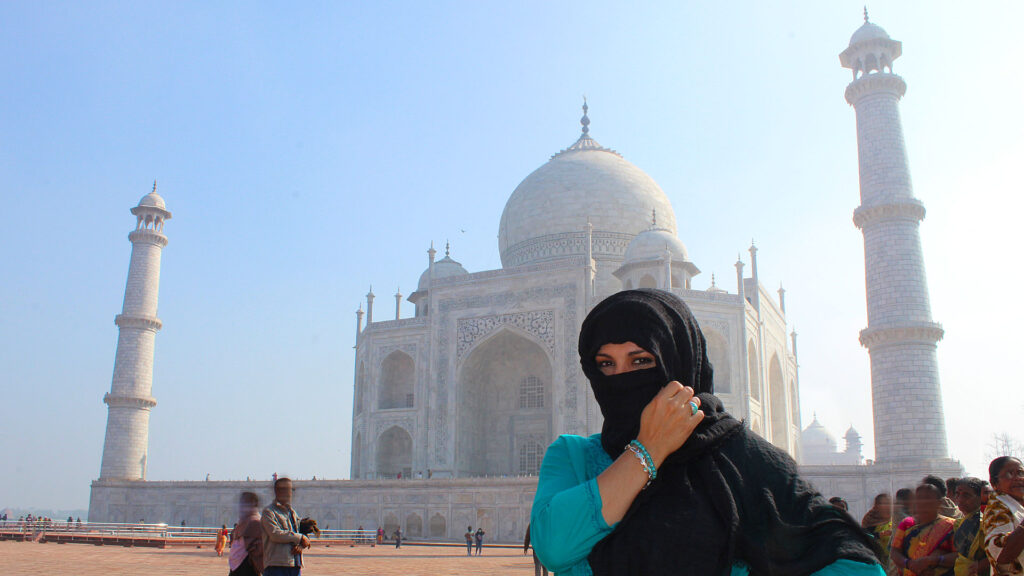
Closing Thoughts
So much passion and dedication resulted in one of the most striking monuments in the world. One worthy since 1983 of belonging to UNESCO’s World Heritage List.
We felt privileged to be there to absorb the details, craftsmanship, and energy of the Taj Mahal. Even more so when we found out that the palace closed to the public the next day due to the pandemic and remained that way until June 2021.
Today you can purchase tickets again for daytime visits at the palace box office. You can even contact the Oficina de Prospección Arqueológica de la India (ASI) to to enjoy the Taj Mahal at night.
Five centuries ago, an emperor used all his power to prove that love is eternal. The Taj Mahal is his legacy to the world, a must-see monument you deserve to visit with your significant other.
NOTE: Special thanks go to Adilem Areche, Harish Joshi, Amir Ji and Indo-American Travels for their collaboration on this article.
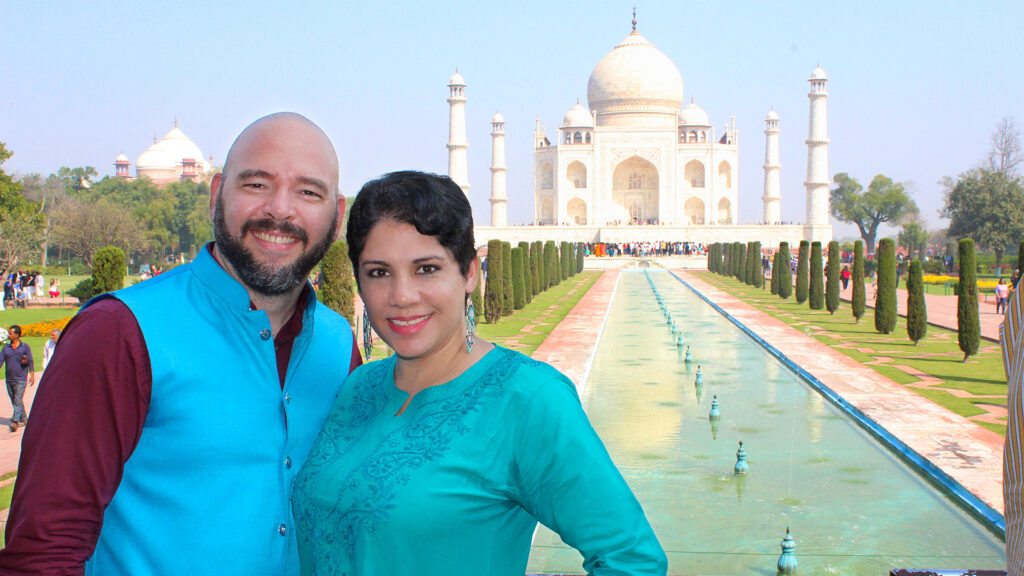
And Now, Some Tips
Friday’s a No-Go
Avoid scheduling your Taj Mahal visit on a Friday. The complex remains closed that specific weekday as followers of Islam gather at the mosque for Ṣalāt al-Jumuʿah or Friday prayer.
Comfortable Footwear
The Taj Mahal complex is extensive. Wear low sandals or sneakers so you can walk through it without wearing out your feet.

Bring Your Camera
There are multiple photo opportunities at this venue, so remember to bring your camera or smartphone for that perfect selfie.
You can also hire a local photographer at the premises, but you’ll have to haggle over the price.
Explore
All tourists go to the Taj Mahal mainly for the mausoleum, but the entire complex deserves your attention. Give yourself the opportunity to walk through every corner of the garden and the side buildings.
Take a Step Further
Agra includes many other interesting tourist spots. Take advantage of your visit to see other landmarks such as the red Agra Fort, which shares some history with the Taj Mahal.
WHERE TO FIND IT
Dharmapuri, Forest Colony, Tajganj, Agra, Uttar Pradesh 282001, India
+91 56 2222 7261
www.tajmahal.gov.in
Gallery


